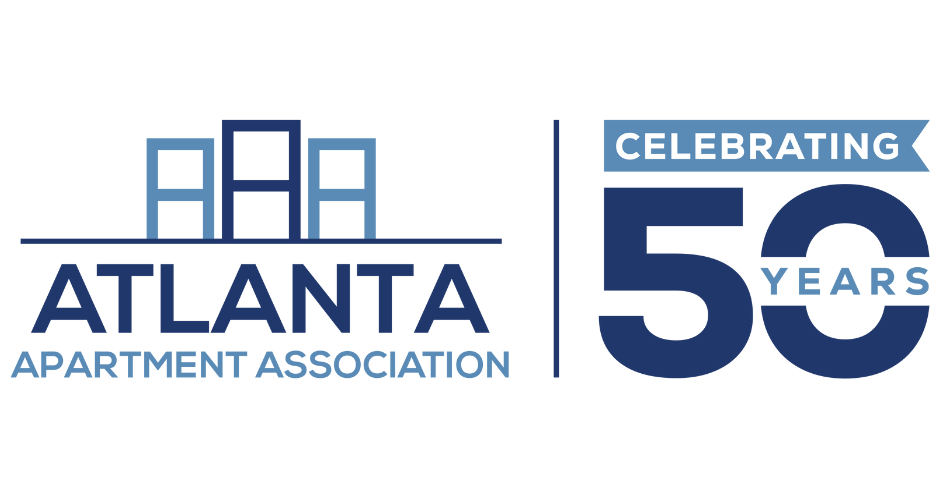Supplier Success
Terms, Acronyms, Definitions
Amenities – Features of an apartment community such as swimming pool, tennis court, covered parking, etc. 
Americans with Disabilities ACT (ADA) – Federal law designed to allow equal access to public facilities to people who have disabilities.
Appreciation – Increase in the value of an asset.
Assessed Value – An assessed value on land and buildings for use in levying real estate taxes.
Bid – A price offer made by a supplier partner in exchange for goods and/or services.
Capital Gain – Profit made as a result of the sale of a capital asset.
Capital Reserves – Designated portion of a budget that is assigned to capital expenditures.
Capitalization – The formula for estimating the value of a property.
Capitalization Rate – The rate of return used to estimate a property’s value based on the net operating income.
Cash Flow – The amount of cash available after all payments have been made for operating expenses and mortgage principal and interest.
Chart of Accounts – A classification or arrangement of account items according to a designated grade or class.
Capital Asset – A major replacement item or project that is outside of a normal operating expense. An example may include stairwell replacement, porch replacement, landscape renovations, and the like.
Capital Expenditure – A major one-time expense representing the purchase price of a capital asset.
Collateral Materials – Commonly refers to print advertisement, brochures, floor plans, and business cards.
Competitive Community – Apartment communities who share similar features, pricing, and geographic location. Typically, these communities appeal to a similar demographic of potential and existing residents.
Competitive Community Survey – A survey conducted among competitive apartment communities. The survey is designed to obtain up-to-date rental rates, square footages, and deposits. The surveys are utilized to establish rental rates and concessions in order to actively compete with similar apartment communities in a given market.
Concession – A designated incentive designed to assist Leasing Professional in the process of closing sales. Usually this consists of reduced rates on such things as deposits, first month’s rents, or reduced rental rates.
Corporate Out Reach – Contact made between an apartment community and area employers. The goal is to establish a relationship in order to promote the apartment community to employees of the employer.
CREC- Congressional Real Estate Caucus
Curb Appeal – The first impression that is made by an apartment community. This typically refers to the “drive-up” appeal and may determine whether a prospective resident visits the community. Signage, parking lots, landscaping, flags, etc., all contribute to the curb appeal of the community.
Debt Service - The mortgage, including interest, on an asset.
Default – Failure to meet the legal obligations of a lease.
Deferred Maintenance – When ordinary maintenance is not performed on a building or unit, it is generally referred to as deferred maintenance.
Delinquent Rent – Past due rent.
Department of Housing and Urban Development (HUD) – Government agency oversees home mortgage lending practices.
Deposits – A variety of deposits may be charged to a potential resident. The most common is a Security Deposit which is designed to reserve an apartment until the resident moves in and is furthermore used to ensure that the terms of the lease are adhered to. Examples include damages beyond normal wear and tear, the lease term is met, and so on. There are a number of deposits that may be charged including such deposits as pet deposits, keys and garage door opener deposits, and so on. Deposits and fees differ as fees are usually considered non-refundable.
Depreciation – The loss of value, including physical deterioration, functional depreciation, and economic obsolescence.
Down time – Usually refers to the period of time that transpires between the time a unit is vacated until it is reoccupied and rent is being collected.
Economic Obsolescence – A loss of value due to factors outside of the apartment community. For example, if a neighborhood is in economic decline, the apartment community may lose its ability to generate satisfactory financial results.
Economic Vacancy – the number of apartment units that are not producing income. This may include models, vacancies, down units, staff-occupied, units and so forth.
Equity – The interest or value of an asset that is over or above the mortgage.
Eviction – The legal process for reclaiming a real estate asset from a resident who is in default of a lease agreement.
Federal Fair Housing Law – A federal law that prohibits discrimination in housing against protected classes. Those classes include religion, nationality, race, handicap, familial status, age, and sex. State and local laws may also have legislation that protects other groups such as, military status, marital status, credit history, source of income, and so on.
Features – Commonly referred to as items that enhance the value of a particular apartment. Examples may include fireplaces, views, up-dated appliances, decorator colors, and the like.
Floorplan – A scaled drawing of an apartment unit that illustrates the lay-out of bedrooms, living areas, dining, kitchen, closets and so forth. Many include dimensions of each room.
Gross Income – The monthly total income from all sources, including rent, utilities, vendor income, etc.
Gross Possible Income – The monthly total income from all sources, including rent, utilities, vendor income, etc.
Hold Over – When a resident retains occupancy of dwelling after the lease agreement has expired.
Interest – A share in the ownership of a property; a payment for the use of money borrowed.
IREM – Institute of Real Estate Management
Late Fee – Fee charged for late payment of rent.
Landlord-Tenant Law – Laws enacted by various jurisdictions that regulate the relationship between landlord and tenant.
Lease – A contract for the possession of a property for a stipulated period of time in consideration of payment of rent.
Lease Conditions – The provisions or covenants setting forth the agreed privileges, obligations, and restrictions under which a lease is made; also called lease terms.
Lessee – The tenant in a lease agreement.
Lessor – The landlord or owner in a lease agreement.
Liability – In insurance, a legal responsibility for injury or damage.
Lien – The legal right of a creditor to have his or her debt paid out of the property of the debtor.
Maintenance – Care and work needed to maintain a property in good physical order.
Management Plan – A strategy for a property’s physical, fiscal, and operational management designed to achieve the owners’ goals.
Market Analysis – A general study of market conditions that impact supply and demand that affect prices for a particular property.
Market Value – A property’s most probable selling or renting price, given the conditions of the market.
Miscellaneous Income – Additional scheduled or unscheduled income such as income from vending machines and the like.
NAHMA – National Affordable Housing Association
NCHM – National Center for Housing Management
Net Operating Income (NOI) – Total collected monies less operating expenses.
NMHC – National Multifamily Housing Council
Notice to Vacate – A legal notice requiring a tenant to vacate the dwelling within a stated period of time.
Occupancy Rate – The ratio of rented and occupied space to the total number of rentable spaces.
Occupational Safety and Health Act (OSHA) – A law requiring employers to comply with job safety and health standards issued by the U.S. Department of Labor.
Operations Manual – A manual designed to establish policies and procedures to adhere to.
Operating Expenses – The expenditures used to operate a community. These expenditures include such items as: salaries, taxes, insurance, utilities, and so forth.
PHMA – Professional Housing Management Association
Possession – Occupancy or control of the property; the right to use and enjoy the premises.
Preventative Maintenance – A planned maintenance program designed to extend the life of certain items such as air conditioners, boilers, and other mechanical components.
Pro-rated rent – The monies charged for actual days occupied. This occurs when a resident moves in or out before or after the first day of the month.
Prospect – A prospective resident or potential resident.
Purchase Order (PO) – A written authorization to an outside supplier partner to provide certain goods and services in a given amount, at a given price, and at a certain time and place.
Recurring Expenses – Operating expenses that occur monthly or periodically, such as those for utilities, supplies, salaries, waste disposal services, insurance, and taxes.
Referral Fee – A fee paid to an agent when a prospective resident referral results in a signed lease and occupancy of a dwelling.
Renewal – A lease renewal that occurs at the expiration of the previous lease agreement.
Renovation – A general term covering the modernization, rehabilitation, or remodeling of existing real estate.
Rent loss – The difference between projected rental income and actual income. This is usually the result of vacancy, vacant down time, and bad debt or unpaid rent.
Resident Profile – A compilation of data regarding the profile of residents living in an apartment community. The data may include such things as income, types of jobs held, and other common factors.
Resident Handbook – A guide for residents containing policies and procedures of the community. Such items as office hours, emergency telephone numbers, swimming pool guidelines and other helpful information would be included.
Service Request – A written request for services to be performed in an apartment unit or common area.
Site Plan – A plan or drawing of an apartment community showing locations of buildings, parking areas, amenities, and roadways.
Square Footage Cost - Also referred to as, price per square foot, is the amount of rent divided by the square footage of the dwelling.
Sublet – The act of renting a dwelling to a third party.
Turnover – The number of apartment units vacated during a specified period of time, usually calculated monthly and annually.
Term – Duration of a resident’s lease.
Traffic – A term used to describe the number of prospective residents who visit an apartment community during a given period of time.
Unit Mix – Refers to the breakdown of various types of apartment styles at a given community. For example, there may be 20 – one-bedroom units, 40 – two-bedroom units, and 15 three-bedroom units.
